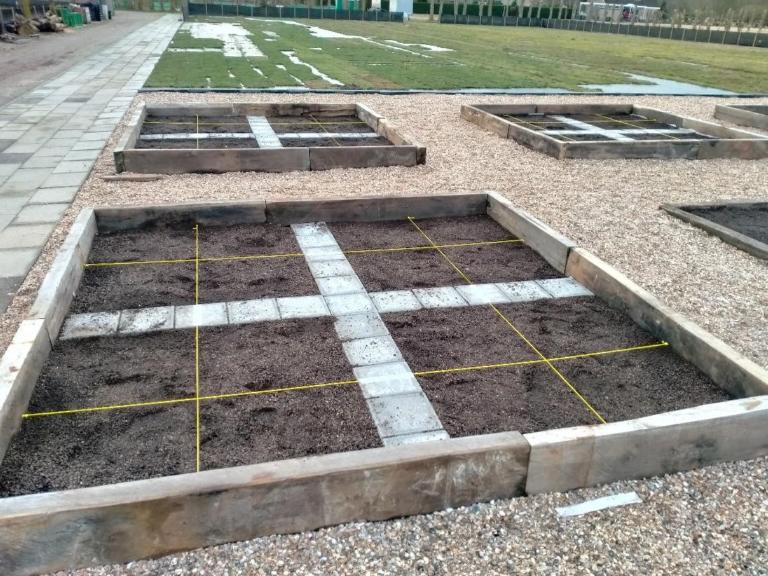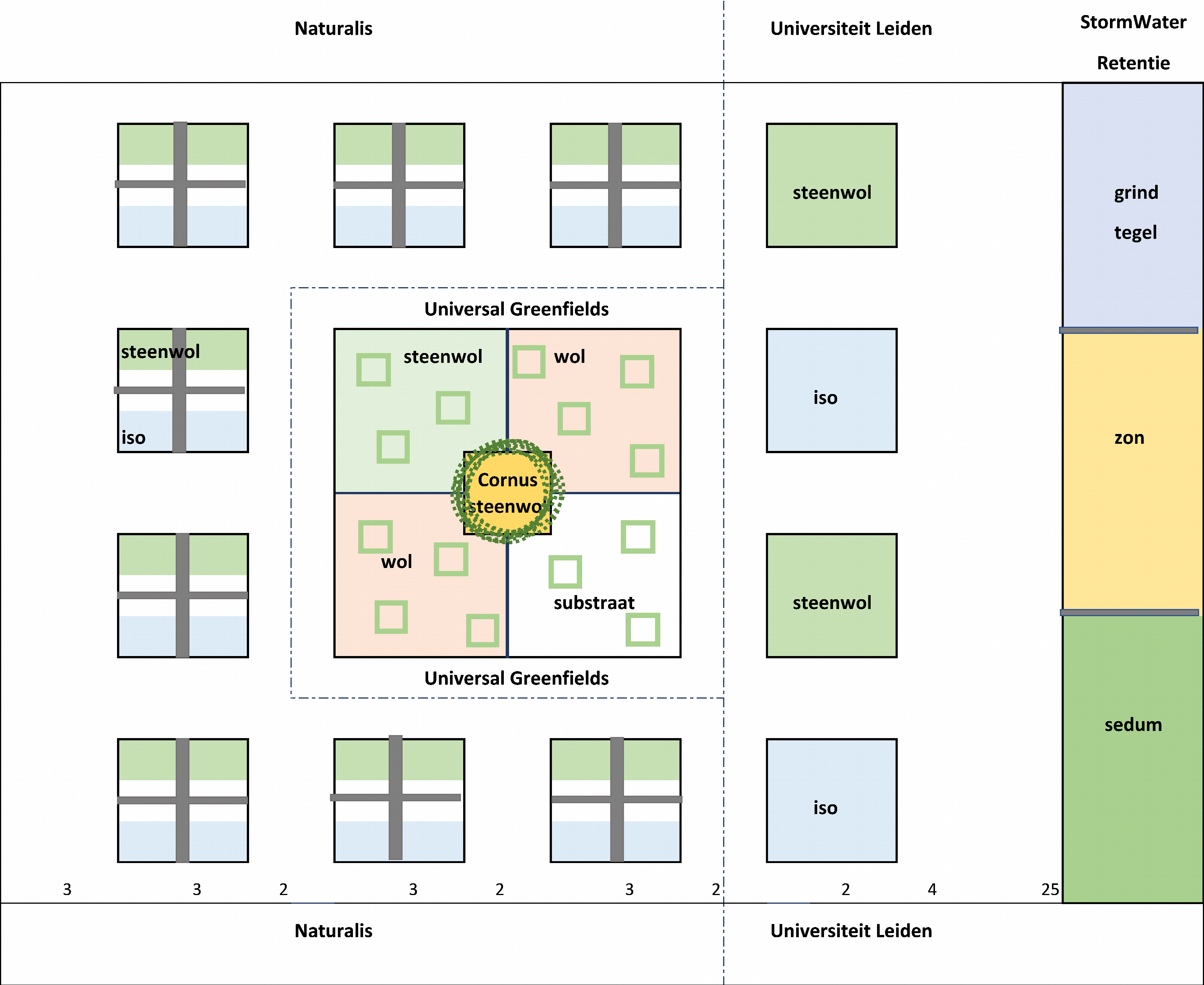
Most green roofs are sedum roofs. These roofs bloom exuberantly in June and July and little to none outside that period. The value for insects is therefore limited. In this project, researchers from Naturalis are testing how they can improve the quality of green roofs for pollinators by adding suitable herbs.
Test locationin Katwijk
In May 2021, Naturalis guest researcher Hans Krüse started building a test green roof on his garage, where he made some qualitative observations. In order to tackle the research more thoroughly, a research site was set up on the site of Universal Greenfields, the roof garden center in Katwijk, by Dirk Roosendaal of Universal Greenfields with the help of Naturalis and others.
Habitatfor pollinators
In the experimental set-up in Katwijk, we are investigating the possibility of extending the flowering period of sedum vegetation to the period April – September. Fourteen types of herbs were sown at the test location, which are attractive to bees. Nine species of sedum have also been planted in plugs. Krüse explains why: 'We think we can increase the habitat for bees, bumblebees and hoverflies by creating a longer period in which suitable food is available.' The study will take at least two years.
Greentest areas
In the test set-up, Krüse is investigating the effect of extra compost and/or extra water buffering on the growth and survival of the herbs present. He does this, among other things, by adding rock wool to the sedum roof.
The test set-up contains 8 blocks of 3.5 x 3.5 m, as shown in the image below. Block 1 contains the entire test set-up, which is repeated in blocks 2 to 8. This mainly focuses on germination, growth, flowering and survival of the herbs. Moisture and temperature will also be measured. Blocks 9 to 12 contain the same test set-up as in block 1, but here the test areas are four times as large. In these test areas, students can take samples to find out what kind of fauna is attracted by these green roofs.

Moreinformation
For more information about the Green roof research, please contact project leader Hans Krüse via hans.kruse@naturalis.nl or 06-34862298, or take a look at the test set-up yourself. Location: Universal Greenfields, 1 st Mientlaan 11, Katwijk.